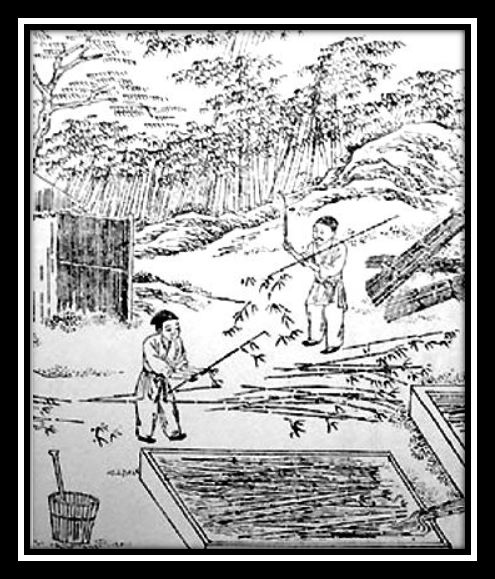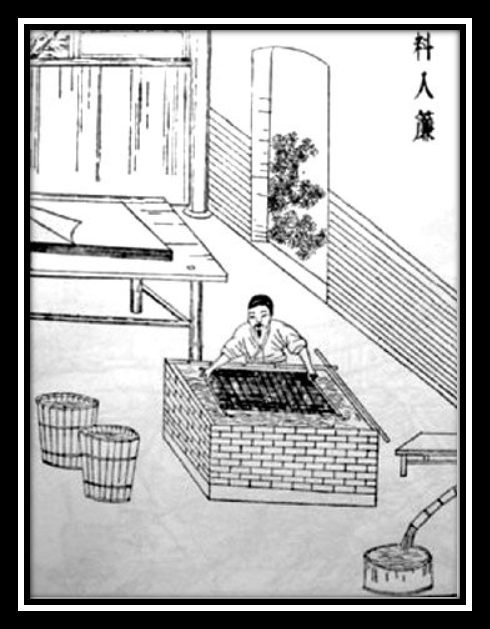As we all know, China’s papermaking technology is famous far and wide, children who want to learn Chinese common phrases come over, let’s walk into the invention and spread of Chinese papermaking.

Papermaking is one of the four great inventions of ancient China. Compared with other writing materials, the surface of the paper is smooth, white and inked, and can also be dyed; The format is wide, there are many words, and it is easy to cut and make various types; Soft and fold-resistant, can be unrolled arbitrarily, easy to carry and store; Long life, easy to preserve; Papermaking raw materials are easy to find and low price; It is widely used for writing, printing, and packaging materials.
These incomparable advantages have made paper enduring, once invented, and spread all over the world and loved by the world.
From the cultural relics excavated by archaeology, it can be seen that early paper was made of plant fibers (hemp), so the “floc” in the Eastern Han Dynasty XuShen’s”Shuowen Jiezi” refers to hemp fiber.
In 1933, Mr. Huang Wenbi, a professor at Peking University, first discovered a piece of hemp paper at the Lop Nor Han beacon site in Xinjiang, “and at the same time, the unearthed person has a wooden simple from the first year of the Yellow Dragon (49 BC), which is the year of Emperor Xuan of Han, and this paper is also a Western Han dynasty.”
Until 1990, scholars found hemp paper made from the early to the last years of the Western Han Dynasty eight times in Xinjiang, Shanxi, Gansu and other places, all before Cai Lun “made paper” in the Eastern Han Dynasty.
In the Eastern Han Dynasty, Cai Lun summarized the experience of manufacturing hemp paper technology and carried out technological innovation on the basis of his predecessors, and organized the production of a batch of better quality hemp paper.
Not only that, he also broke through the papermaking technology of woody bast fiber, presided over the successful development of papermaking paper, made papermaking raw materials more extensive, and promoted the development of papermaking technology and papermaking industry.
By the time of the Wei and Jin dynasties and the Northern and Southern Dynasties, in addition to hemp paper and Chinese skin paper, mulberry and rattan skin paper were also produced; In the Central Plains, bamboo curtain bed molds were commonly used, making paper the main writing material in this period.
The Sui and Tang dynasties were the heyday of hemp paper, and the invention of woodblock printing further promoted the prosperity of the paper industry. Bamboo paper was produced in the south at the end of the Tang Dynasty, and gold-flowered paper, water-patterned paper and calender paper decorated with gold and silver powder on colored paper were also invented during this period.
In the Song and Yuan dynasties, leather paper and bamboo paper became the main paper due to technological progress, and hemp paper began to decline due to raw material problems. The Ming Dynasty was the culmination stage of papermaking, and its technology was also recorded by Song Yingxing in “Tiangong Kaiwu Killing”. After the invention of Chinese papermaking, it began to spread to all parts of the world.

Chinese papermaking technology was introduced to Europe through the Arab world. The first European countries to come into contact with paper and papermaking technology were probably Spain, France and Italy. Paper appeared in Spain no later than the 10th century. The manuscript found in Santo Domingo is the earliest known Spanish text, made of flax fibre and glued with starch, similar to Arabic paper.
After the 18th century, with the development of culture, education and science, the consumption of paper in European countries increased day by day. Due to the single production of hemp paper, there has been a severe shortage of raw material supply, and people are constantly looking for alternatives.
At the same time, they once again turned their attention to China, the place where papermaking technology was invented, and sought new information on the development of China’s papermaking technology, so that China’s papermaking technology was directly introduced to Europe.
With the change of papermaking raw materials and the introduction and use of bendable bamboo curtain paper making technology, the production of paper in Europe increased greatly in the middle of the 18th century.
The bendability of Chinese paper-making bamboo curtains reflects an advanced papermaking way of thinking, so it has great development prospects and becomes a necessary ladder to modern papermakers. Hunter, a famous American paper historian, said: “Today’s big “machine” paper industry is built on the original oriental (referring to China) bamboo curtain paper molds. ”

In short, the papermaking technology invented by Chinese not only promoted the development of its own culture, education and science and technology, but also spread to all parts of the world through the Silk Road, which played a huge role in promoting the development of human civilization, especially modernization. After seeing Chinese papermaking, did the children have an interest in learning Chinese common phrases?
Chinese common phrases are not difficult, as long as we are patient and careful, we will discover the mystery. With the help of card memory, we hope that children can find fun and potential in language learning!
